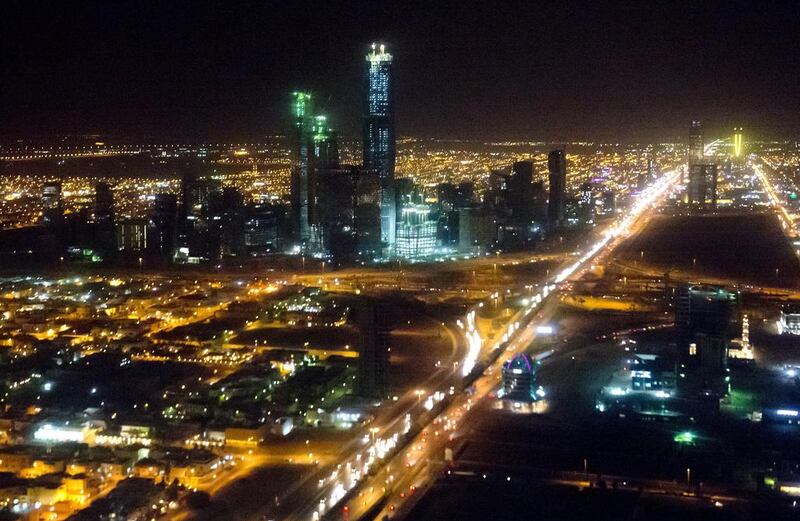The Arabian Gulf’s funding needs will more than halve as a portion of combined gross domestic product between 2018 and 2021 to 5 per cent, compared to 2015 to 2017, thanks to higher oil prices and government policies, according to S&P Global Ratings.
The six GCC members will cumulatively need $300 billion (Dh1.1 trillion) between 2018 to 2021 to finance their fiscal deficits, with around 50 per cent of funding going to Saudi Arabia, the biggest Arab economy, the rating agency said in a report on Wednesday. This compares with $450bn, equivalent to 12 per cent of the combined GDP of GCC states, spent between 2015 to 2017.
GCC funding needs “are now accumulating at a slower pace thanks to higher oil prices and government policy responses,” the rating agency said.
Gulf countries have introduced a number of measures to shore up revenue and trim expenditure after the oil price plunged in mid-2014 from $115 a barrel to less than $30 in the first quarter of 2016. Prices have rebounded this year with oil hovering at $73 year to date.
Notably, the UAE and Saudi Arabia have introduced taxes, including 5 per cent VAT, and increased energy and electricity prices among other measures to control their finances. Bahrain is implementing 5 per cent tax beginning January 2019.
___________
Read more:
[ Saudi Arabia outlook stable as 'moderate' growth continues to 2021, S&P says ]
___________
In 2019, cumulative GCC deficit will reach $75bn or 5.5 per cent of combined GDP compared with the 2016 trough of $190bn or 16 per cent of combined GDP, S&P said.
The rating agency estimates the GCC deficit to stabilise at 6 per cent of GDP over the 2018-2021 period compared with 5.5 per cent in 2018.
“Our assumption of falling oil prices and higher spending will likely offset planned revenue-raising measures and widen fiscal deficit in both Abu Dhabi and Kuwait,” the agency said. “However, the denominator effect of rising GDP should maintain the fiscal deficit at the 6 per cent of GDP level for the region as a whole.”
S&P also projects that financing needs will be split 70:30 per cent between debt and assets during the forecast period, with Qatar and Bahrain sticking to debt and Kuwait and Abu Dhabi drawing down assets.
“We base these assumptions on the financing trends of the past few years, governments' explicitly stated policy decisions, and our view of the availability of assets,” the rating agency said “Apart from Oman and Bahrain, GCC governments still have an exceptionally high level of government liquid assets at their disposal.”
The UAE is one of the countries with highly liquid assets, central bank governor Mubarak Al Mansoori said on Tuesday.
Government deposits in UAE-based banks hit an all-time-high of Dh286 billion by the end of September 2018, up by Dh74bn in the first nine months of the year, according to the latest central bank statistics.
The uptick in deposits is in large part thanks to rising oil prices, which grew 35 per cent during the past 12 months, boosting the total assets of the banking sector.
Government fiscal surpluses since the beginning of the year amounted to Dh186bn, according to date from the Ministry of Finance.
The banking sector continues to attract inflows in the form of non-resident deposits, which rose to a two-year high of Dh205.4 billion at the end of September and accounted for 11.8 per cent of total deposits in the UAE.






